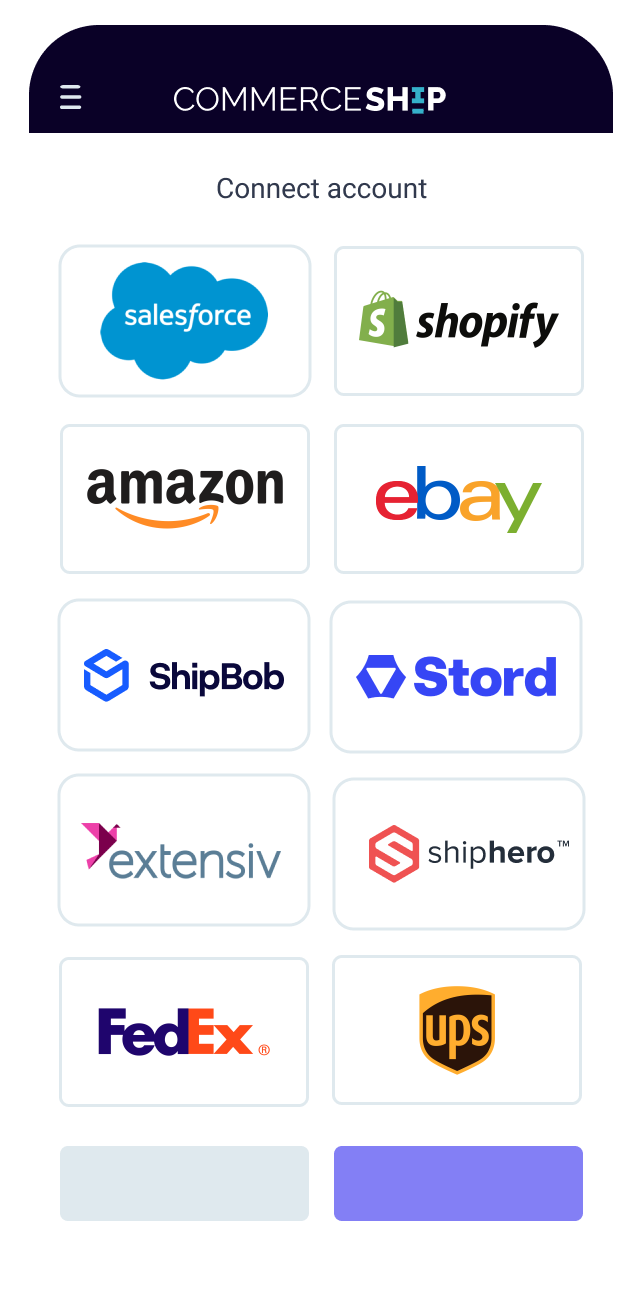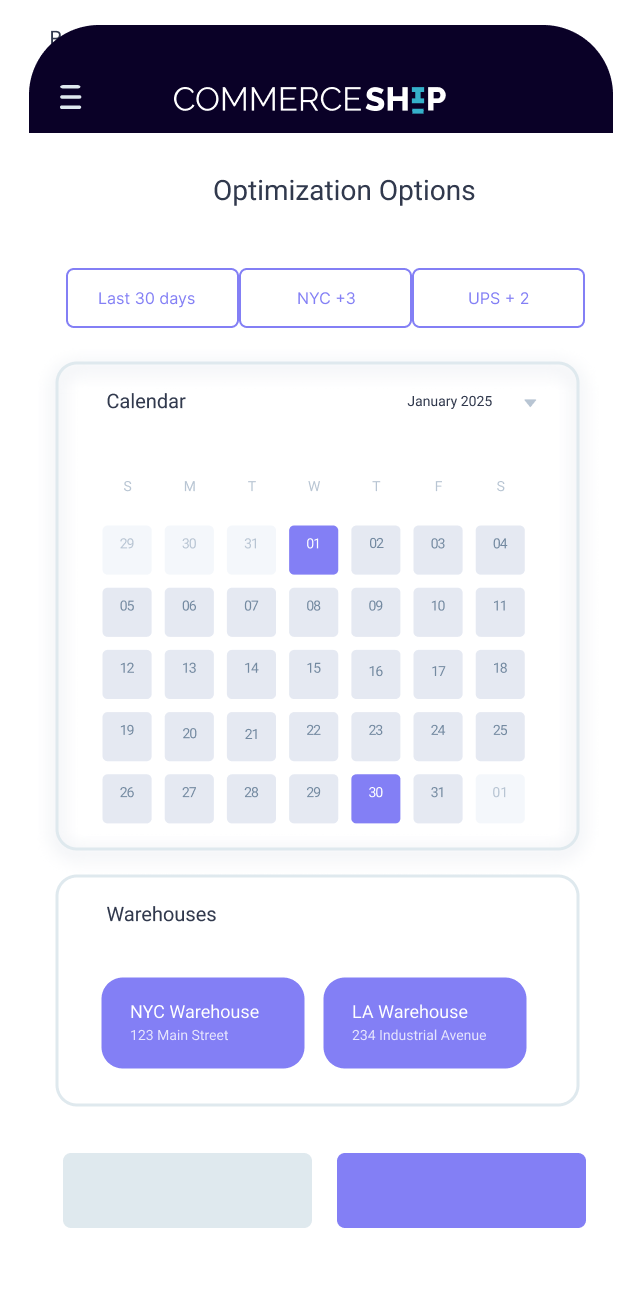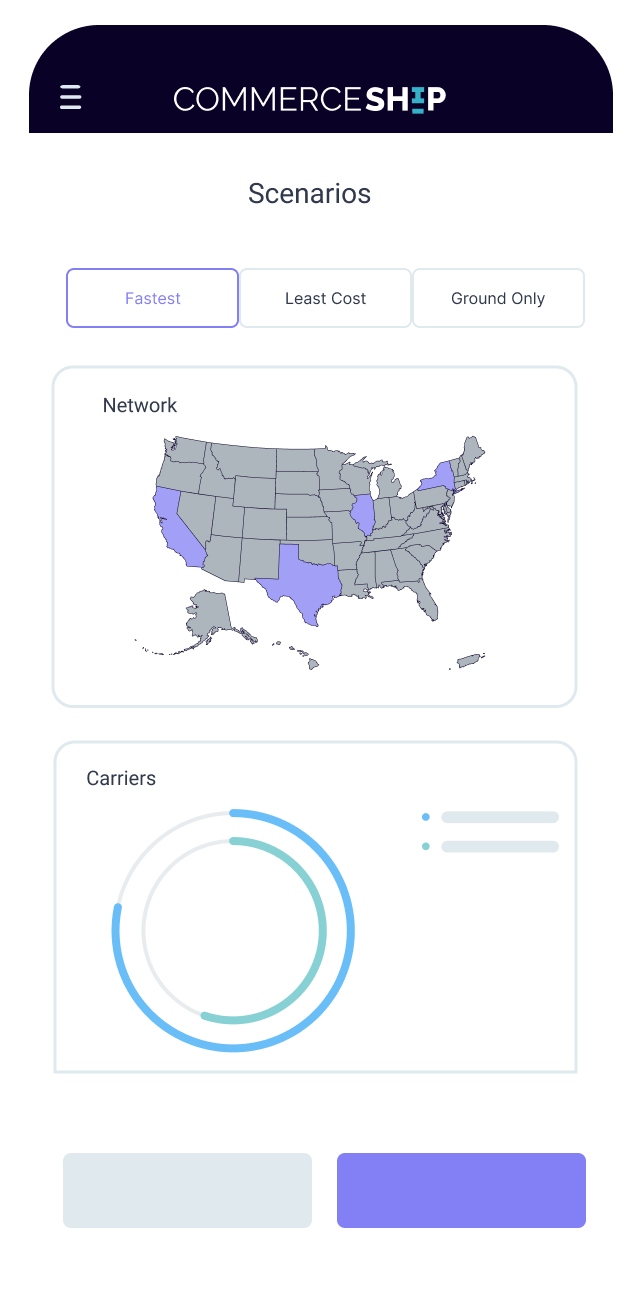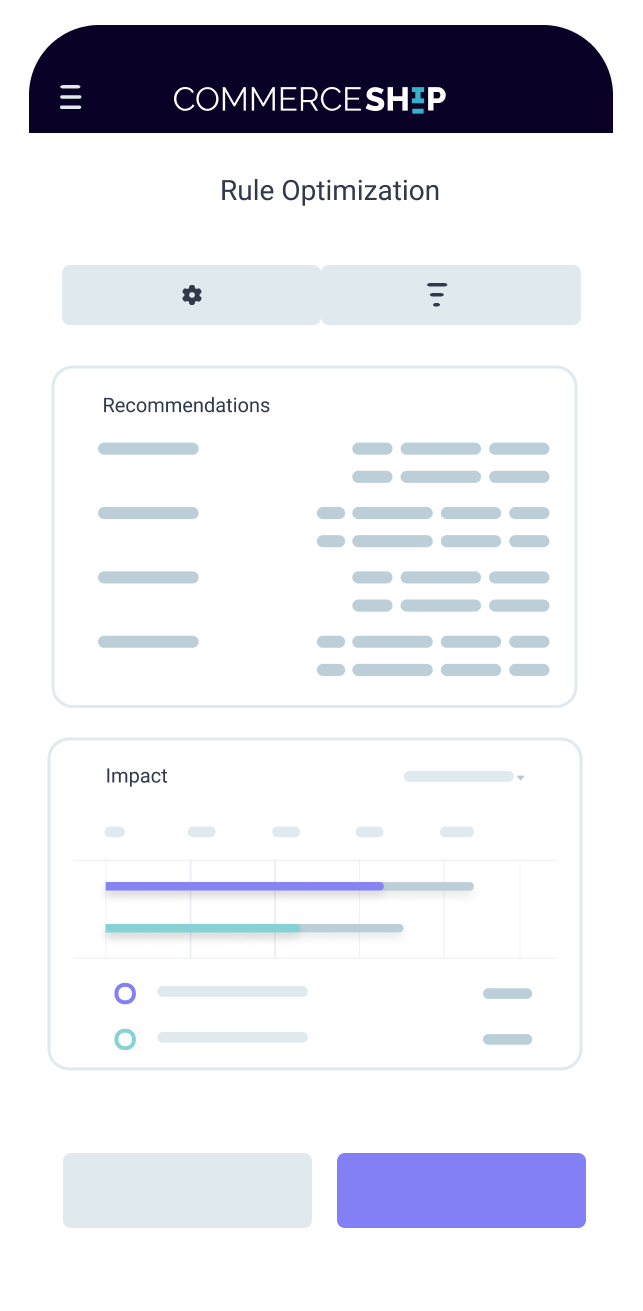Optimize your shipping operations
Leverage insights for control over your costs and improve efficiency
Get accessCurrent Transit Mix
Current ground vs air distribution
Technology-driven solutions to make smarter shipping decisions
Optimize networks
Build a better distribution network for faster delivery at lower costs
Run scenarios
Model out potential outcomes based on changing shipping behaviors
Compare results
Review costs and delivery times across scenarios
Improve delivery
Choose the best origin, packaging and carrier services
How Optimization Works
Step 1. Connect Your Data
Integrate your business data including warehouses, inventory, products, carriers, and shipping information.
Step 2. Set Optimization Criteria
Define scenarios by adding new locations, packaging options, carrier services, or other business parameters.
Step 3. Run Scenarios
Test different optimization strategies based on your business requirements and constraints.
Step 4. Implement Solutions
Review optimization recommendations and automate execution of your preferred scenarios.
Our platform offers several optimization strategies to match your shipping goals:
- Least Cost: Find the most cost-effective shipping option
- Fastest Delivery: Prioritize speed with the quickest delivery options
- Transit Time Match: Compare between carrier services with equivalent delivery time in transit
- Ground Services Only: Optimize using only ground shipping options
- Ground When Transit Time Matches Air: Use ground shipping when it matches air transit times
Beyond rate selection, our optimization considers several factors that impact your broader logistics operations:
- Network: Analyze the impact of adding or consolidating warehouses
- Inventory: Ensure shipping decisions maintain optimal inventory levels
- Carrier Contract: Meet volume commitments and achieve discount tiers
- Packaging: Optimize through cartonization or carrier-provided packaging
- Service Levels: Balance cost, speed, and service level requirements
Yes, our platform offers a flexible business rules engine:
- Rule Structure: Build rules using Triggers, Conditions, and Actions for complete control
- Rule Management: Easily enable and disable, run, test, clone, or delete rules as needed
- Conditional Logic: Combine multiple conditions in your selection criteria
- Rule Hierarchy: Set the order in which rules are run
- Shipment Execution Integration: Automate order processing, carrier selection, and shipping label generation
- Coming Soon AI-Powered Rule Optimization: From intelligent suggestions to automatic adjustments, our AI engine will analyze shipping patterns and evolve your rules for optimal performance
Related resources:
Our optimization engine follows a structured approach to determine the optimal shipping solution:
- Data Integration: Utilizes a canonical data model with information from syncs or uploads to create a comprehensive shipping dataset
- Rule Application: Applies internal logic, external constraints, and account configuration settings to identify viable options
- Scenario Execution: Evaluates shipping options based on selected optimization scenarios and additional preferences
- Option Prioritization: Ranks qualifying shipping options according to optimization goals and priorities
- Solution Selection: Automatically selects optimal options or presents choices based on configuration settings
Our platform provides several ways to evaluate and refine your optimization approach:
- Scenario Comparison: Switch between optimization scenarios to see how different strategies affect your shipping options
- Configuration Testing: Experiment with changes to settings to observe potential improvements
- Optimization Dashboard: View comprehensive analytics showing current vs. optimized performance across multiple categories
- Category Insights: Analyze specific improvement areas including carrier service, packaging, inventory, network, and contract utilization



